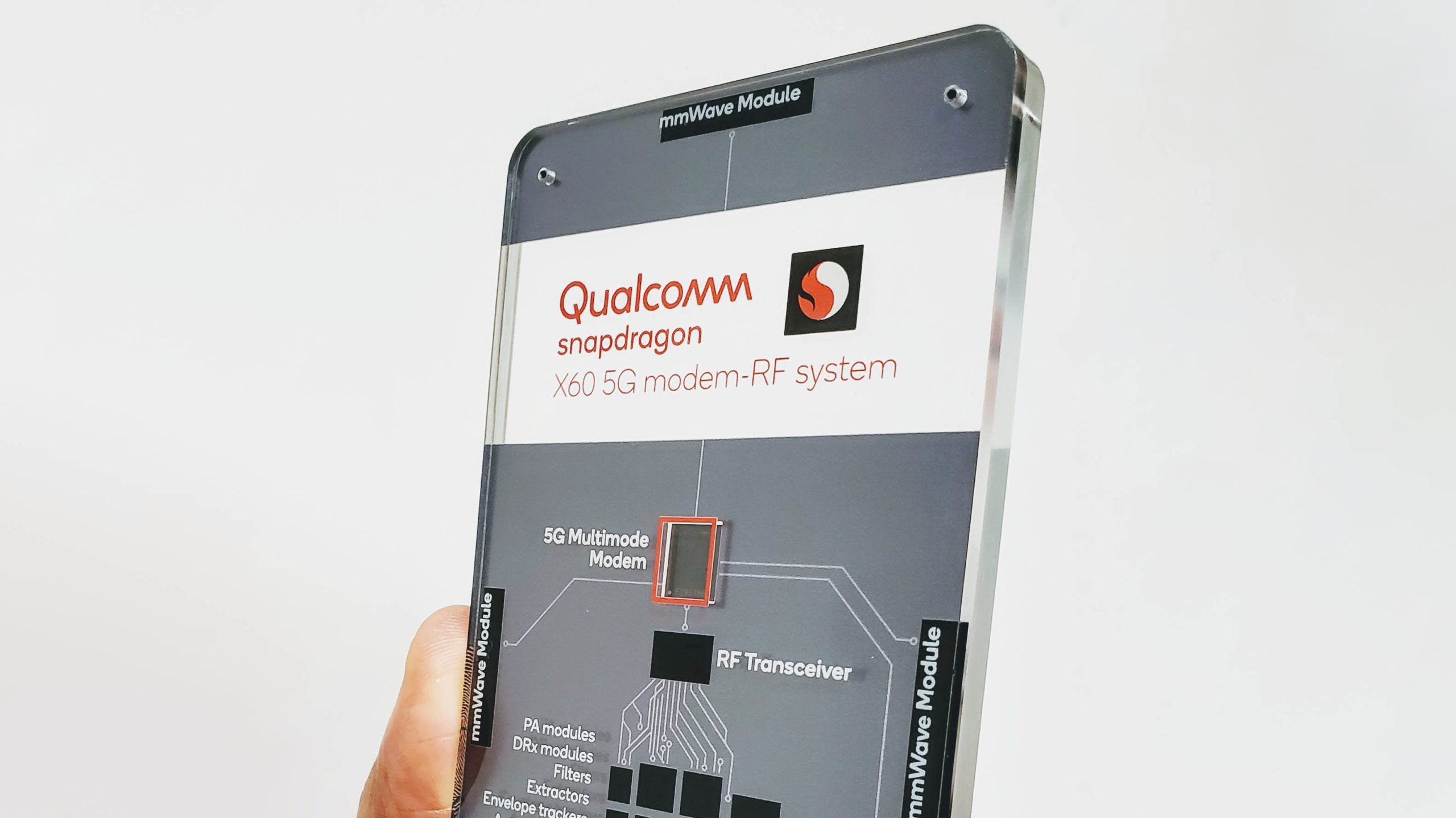
Qualcomm has announced its third generation modem-RF system, the Snapdragon X60 5G, as well as a new ‘ultraSAW’ filter technology for 5G and 4G mobile devices.
To start, the X60 builds on the X50 and X55 5G Modem-RF systems and brings new features to Qualcomm’s modem-to-antenna solution. The X60 is the world’s first 5-nanometre (nm) 5G baseband and the first 5G modem-RF system to support spectrum aggregation across all key 5G bands and combinations. This includes mmWave and sub-6 GHz spectrum — commonly referred to as sub-6.
The X60 system also uses both frequency division duplex (FDD) and time division duplex (TDD).
In a press release, Qualcomm said that the X60 offers greater flexibility to operators that will allow them to increase 5G performance while utilizing fragmented spectrum assets. Practically, that means the X60 should see an increase in average 5G speeds in mobile devices, as well as help accelerate network transitions to 5G standalone. Currently, most 5G networks operate as non-standalone, which means they use an LTE anchor band to support a 5G data link.
Moving to standalone 5G means ditching the LTE anchor, and will require key features from the X60 including mmWave and sub-6 aggregation, sub-6 FDD and TDD aggregation, Voice-over-NR (VoNR) and dynamic spectrum sharing (DSS). Thanks to the X60’s support for these technologies, network operators have a wider range of deployment options for 5G and can even repurpose LTE spectrum for use in 5G.
Snapdragon X60 can deliver up to 7.5Gbps downloads

Additionally, the X60 sports Qualcomm’s new QTM535 mmWave antenna module, which features a more compact design and superior performance.
Qualcomm says that its X60 modem-RF system can deliver up to 7.5Gbps download speeds and 3Gbps upload speeds. Plus, with the aggregation of sub-6 spectrum in standalone mode, it can double peak 5G data rates compared to solutions with no carrier aggregation support. VoNR is also crucial in transitioning to 5G standalone as it will allow operators to provide high-quality voice services on 5G NR.
Finally, Qualcomm expects to ship Snapdragon X60 and QTM535 samples in Q1 of 2020. Commercial premium smartphones using the new modem-RF system are expected to launch in early 2021.
As for the company’s ultraSAW announcement, the new technology brings higher performance to certain spectrum frequencies.
The ultraSAW is a type of radio frequency (RF) filter that isolates radio signals from the different spectrum bands used by phones to transmit and receive information. Qualcomm says that ultraSAW achieves as much as a 1 decibel (dB) improvement in insertion loss, which improves performance compared to competing bulk-acoustic (BAW) filters.
These improvements apply to frequencies between 600MHz to 2.7GHz and allow for more power-efficient RF paths in 5G and 4G multimode mobile devices. Plus, ultraSAW offers a lower cost point than competing commercial solutions.
Qualcomm says it is integrating ultraSAW across its product line.
MobileSyrup may earn a commission from purchases made via our links, which helps fund the journalism we provide free on our website. These links do not influence our editorial content. Support us here.


